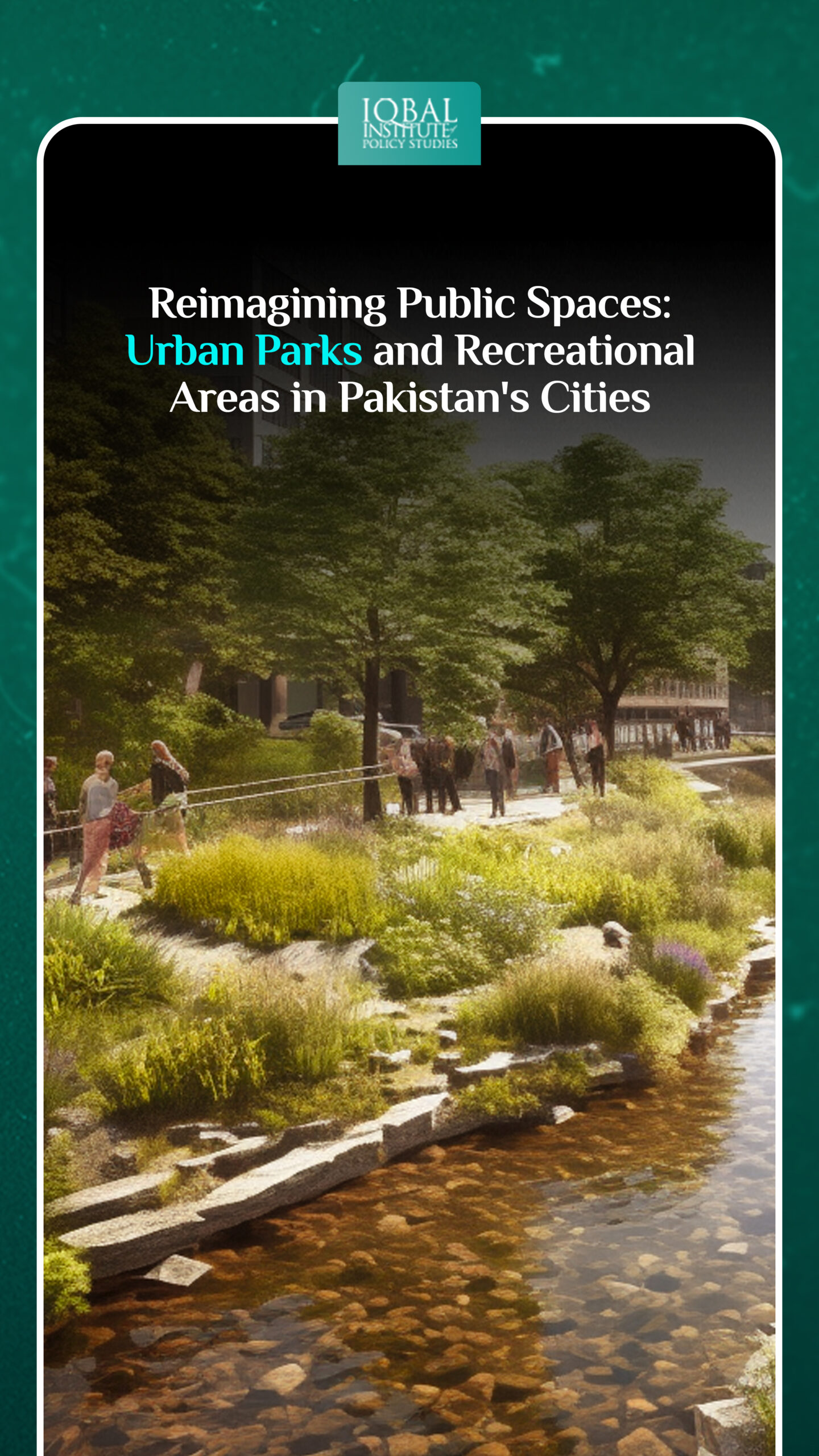As Pakistan’s urban centers experience rapid growth and increasing population density, the importance of creating vibrant and accessible public spaces becomes more evident than ever. Urban parks and recreational areas play a pivotal role in shaping the quality of life for city dwellers, contributing to their physical and mental well-being while fostering a sense of community and belonging. As concrete and steel embrace the skyline, the significance of preserving green spaces cannot be overstated. Urban parks and recreational areas act as sanctuaries, offering an oasis of tranquility amidst the ceaseless energy of urban life. These green lungs of the city play a vital role in shaping the well-being and happiness of its inhabitants. In this blog, we will delve deeper into the significance of reimagining public spaces, the manifold benefits they bring, and explore strategies to successfully integrate urban parks and recreational areas into Pakistan’s bustling cities.
The Value of Urban Parks and Recreational Areas
Public spaces are the heartbeat of any city, serving as communal gathering spots and catalysts for social interactions. Urban parks offer a plethora of benefits that significantly enhance the urban living experience”
Health and Wellness
Access to green spaces and recreational areas encourages physical activities such as walking, jogging, cycling, and sports. Regular engagement in these activities promotes a healthier lifestyle, reduces the risk of lifestyle-related diseases, and enhances overall well-being.
Mental Relaxation
In the midst of the concrete jungle, urban parks provide a serene environment where individuals can unwind, destress, and connect with nature. Spending time in green spaces has been shown to reduce anxiety and improve mental health, acting as a sanctuary from the pressures of urban life.
Social Cohesion
Public spaces foster a sense of community spirit, as people from diverse backgrounds come together to enjoy leisure activities and events. The shared experience of public spaces promotes social interaction, cultural exchange, and strengthens the fabric of society.
Economic Growth
Well-designed urban parks can become iconic landmarks that attract visitors, tourists, and businesses to the surrounding areas. This influx of foot traffic can drive local economic growth and create opportunities for small businesses and vendors.
Environmental Benefits
Green spaces contribute to environmental sustainability by mitigating the heat island effect, improving air quality, and supporting biodiversity. They act as essential pockets of nature in urban landscapes, providing habitats for various plant and animal species.
Challenges to Reimagining Public Spaces in Pakistan
While the concept of urban parks and recreational areas holds immense potential, there are several challenges that must be addressed for successful implementation:
Land Acquisition
Finding suitable land within densely populated cities can be a daunting task. It requires strategic planning and collaboration between government authorities, private stakeholders, and urban planners to identify appropriate spaces for public parks.
Infrastructure and Maintenance
Developing and maintaining public spaces demand ongoing investment and resources. Securing sustainable funding models and effective maintenance strategies is crucial to ensure the longevity and usability of these spaces.
Safety and Security
Ensuring the safety of park-goers is of paramount importance to attract visitors and encourage regular usage. Adequate lighting, surveillance, and the presence of park rangers can contribute to a sense of security.
Cultural Sensitivity
Pakistan is a diverse country with various cultural norms and traditions. When reimagining public spaces, it is essential to incorporate designs and amenities that respect local customs and cater to the preferences of different communities.
Embracing Reimagined Public Spaces
To transform Pakistan’s cities into vibrant, people-friendly environments, reimagining public spaces should become a priority for urban planners and policymakers. Here are some steps to achieve this:
Community Engagement
Involving local communities in the planning and design process is essential. Engaging with residents, understanding their needs, and incorporating their feedback fosters a sense of ownership and pride, leading to greater utilization and maintenance of public spaces.
Adaptive Reuse
Transforming underutilized or abandoned spaces into parks can be a cost-effective approach to expanding public spaces. Unused plots, parking lots, or former industrial sites can be transformed into green oases, breathing new life into urban areas.
Public-Private Partnerships
Collaborating with private entities can help secure funding and expertise in designing and managing public spaces. Many corporations value social responsibility and are willing to contribute to community development initiatives.
Sustainable Design
Incorporating sustainable elements such as water-saving features, solar lighting, and the use of native plant species will ensure environmental responsibility. These green design principles not only conserve resources but also create a harmonious integration of nature within urban landscapes.
Art and Culture
Integrating art installations, cultural events, and performance spaces can enrich the park experience and promote local talent. Art in public spaces not only adds aesthetic value but also encourages creativity and cultural expression.
Case Studies and Success Stories
Several cities around the world have successfully reimagined public spaces, offering inspiration for Pakistan’s urban planners. For example:
New York City’s High Line
The transformation of a disused elevated railway into a beautiful linear park has become a beloved green oasis, attracting both locals and tourists alike.
Seoul’s Cheonggyecheon Stream
The restoration of a neglected urban highway into a picturesque waterway and park revitalized the area, improving air quality and enhancing the overall urban environment.
Conclusion
Reimagining public spaces, particularly through the creation of urban parks and recreational areas, is a transformative step towards creating more livable and sustainable cities in Pakistan. By prioritizing community engagement, embracing innovative design, and exploring public-private partnerships, Pakistan’s cities can embark on a journey to revitalize their urban landscape. These efforts will not only offer residents and visitors a renewed sense of place, community, and well-being but also foster a stronger connection between people and their cities. As we invest in these spaces, we invest in the happiness and prosperity of our cities and their people, leaving a lasting legacy for generations to come.
This article is written by Maha Nazami. Maha is a research analyst at The Iqbal Institute of Policy Studies (IIPS).



Leave a Reply